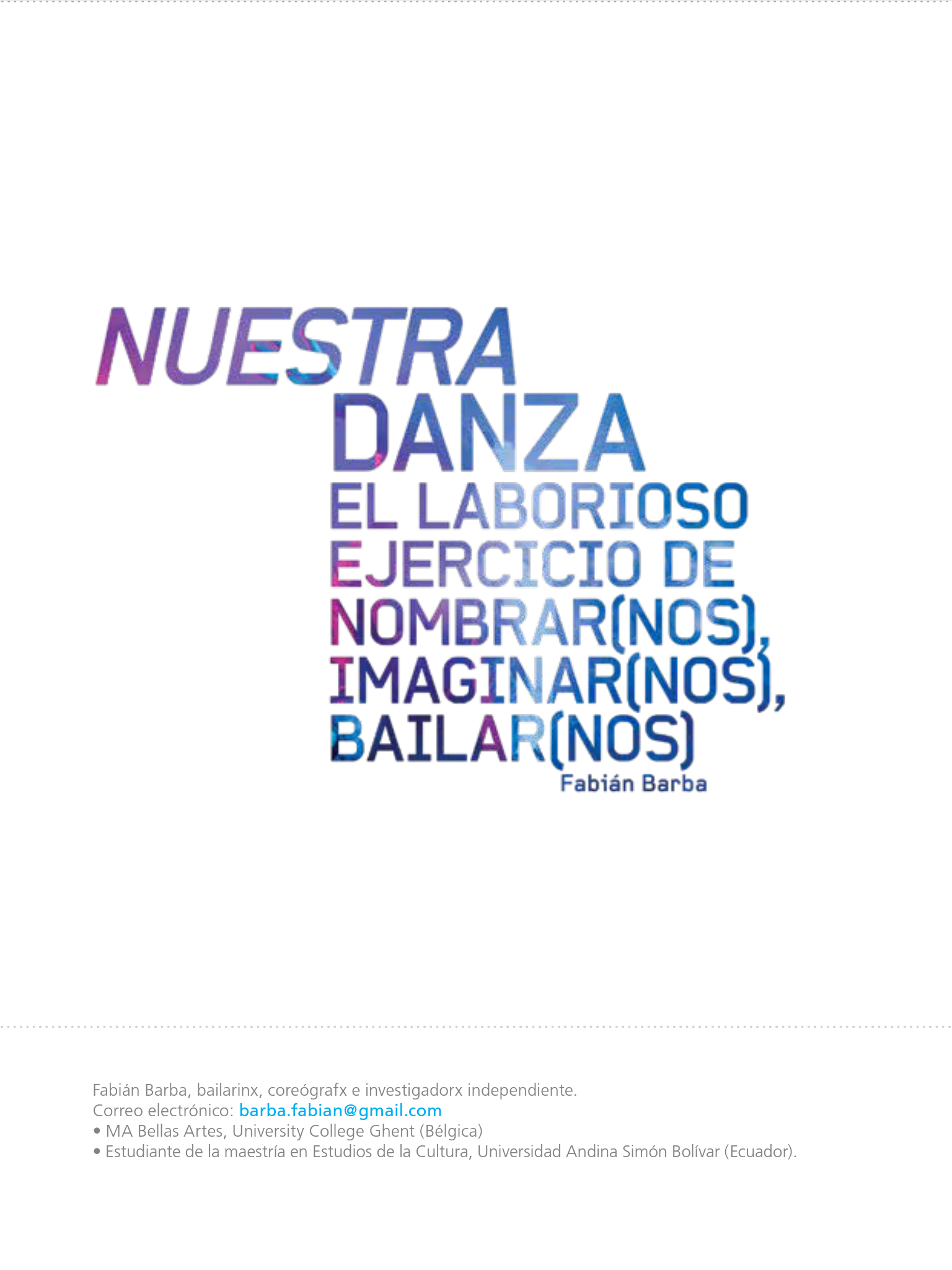
Publicado 2019-12-05
Palabras clave
- danza,
- identidad,
- historia,
- territorio
Derechos de autor 2019 Fabián Barba

Esta obra está bajo una licencia internacional Creative Commons Atribución-NoComercial 4.0.
Cómo citar
Resumen
En este artículo, quisiera reflexionar sobre los modos posibles de pensar la danza que se hace en Ecuador. ¿Nuestra danza es necesariamente una danza ecuatoriana? Si pensamos nuestra danza en estos términos, ponemos al centro de nuestras preguntas la idea de una identidad cultural nacional que se construye y expresa a través de esta práctica artística. ¿Podemos pensar una danza nuestra sin pensarla dentro del encuadre del Estado-nación? ¿Qué tipo de nosotrxs se construiría entonces? ¿Cómo eso afectaría la forma en que nos imaginamos, en que nos bailamos?
Descargas
Referencias
- Coronil, F.(1996). "Beyond Occidentalism: Toward nonimperial geohistorical categories. Cultural Anthropology 11(1), 51-87.
- Espinosa Apolo, M.(2000). Los mestizos ecuatorianos y las señas de identidad cultural. Quito: Tramasocial.
- Lugones, M.(2003). Pilgrimages/Peregrinajes; Theorizing Coalition Against Multiple Oppressions. Oxford: Rowman & Littelfield publishers.
- Massey, D.(2012). Doreen Maseey, un sentido global del lugar. Editado y traducido por Abel Albet y Núria Benach. Barcelona: Icaria.
- Mora, G. (ed.).(2015). Diálogos que trazan la historia de la danza moderna y contemporánea del Ecuador, tomo II. Quito: El Apuntador.
- Entrevistas personales a Kléver Viera:
- (2016), 24 de agosto
- (2017a), 30 de marzo
- (2017b), 6 de abril
